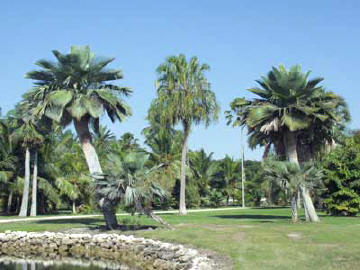Coconut Grove Palmetum
at Montgomery Botanical CenterThe Palmetum is a well-documented, population-based collection of palms covering an area of about 19 acres.
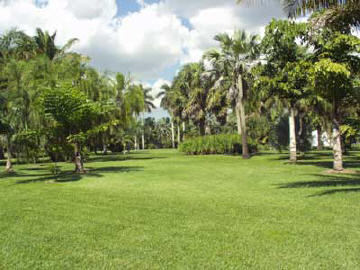
On left side of this vista is Caryota gigas, collected from southern China in 1993 by Sin-Lin Yang. On the right is a white-trunked Caryota bacsonensis, collected from Malaysia by William Hahn in 1993. Beyond it on the right is an original planting of Bismarkia nobilis planted between 1934 and 1939. And behind that is a patch of native saw palmetto, Serenoa repens.
This 1932 planting of Hyphaene coriacea came from South Africa.
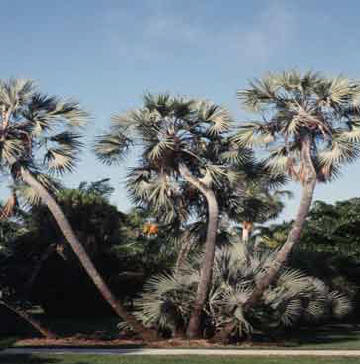
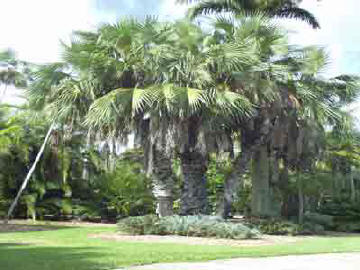
This single Hyphaene compressa plant branches about 15 feet above the ground. It was collected by Stanley Kiem in Tanzania in 1965.
Arthur C. Langlois, author of Supplement to Palms of the World, collected this Dypsis madagascariensis (center) in 1962. Since then, cold snaps and hurricanes have reduced this resilient palm to the ground, but it always recovers
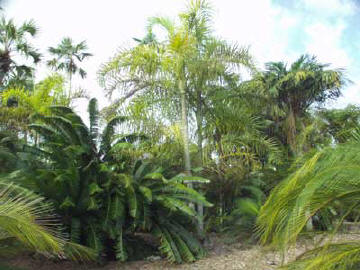
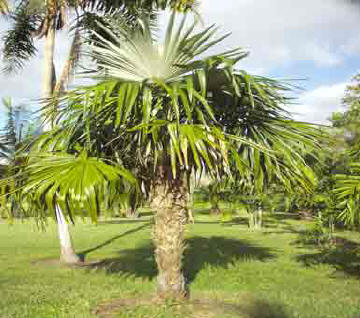
Nancy Edmondson, former curator of palms at Fairchild Tropical Garden, collected this Cryosophila guagara from Guatemala in 1982. The trunk root spines are characteristic of this genus.
Martin Gibbons and his friend Spanner rediscovered Medemia argun from the Numibian Desert of Sudan. This palm was from one of the seeds collected on that 1995 expedition.
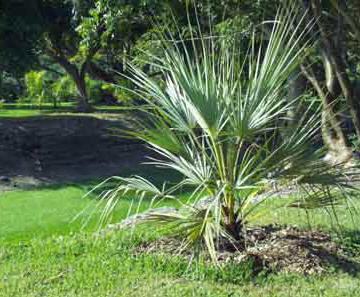
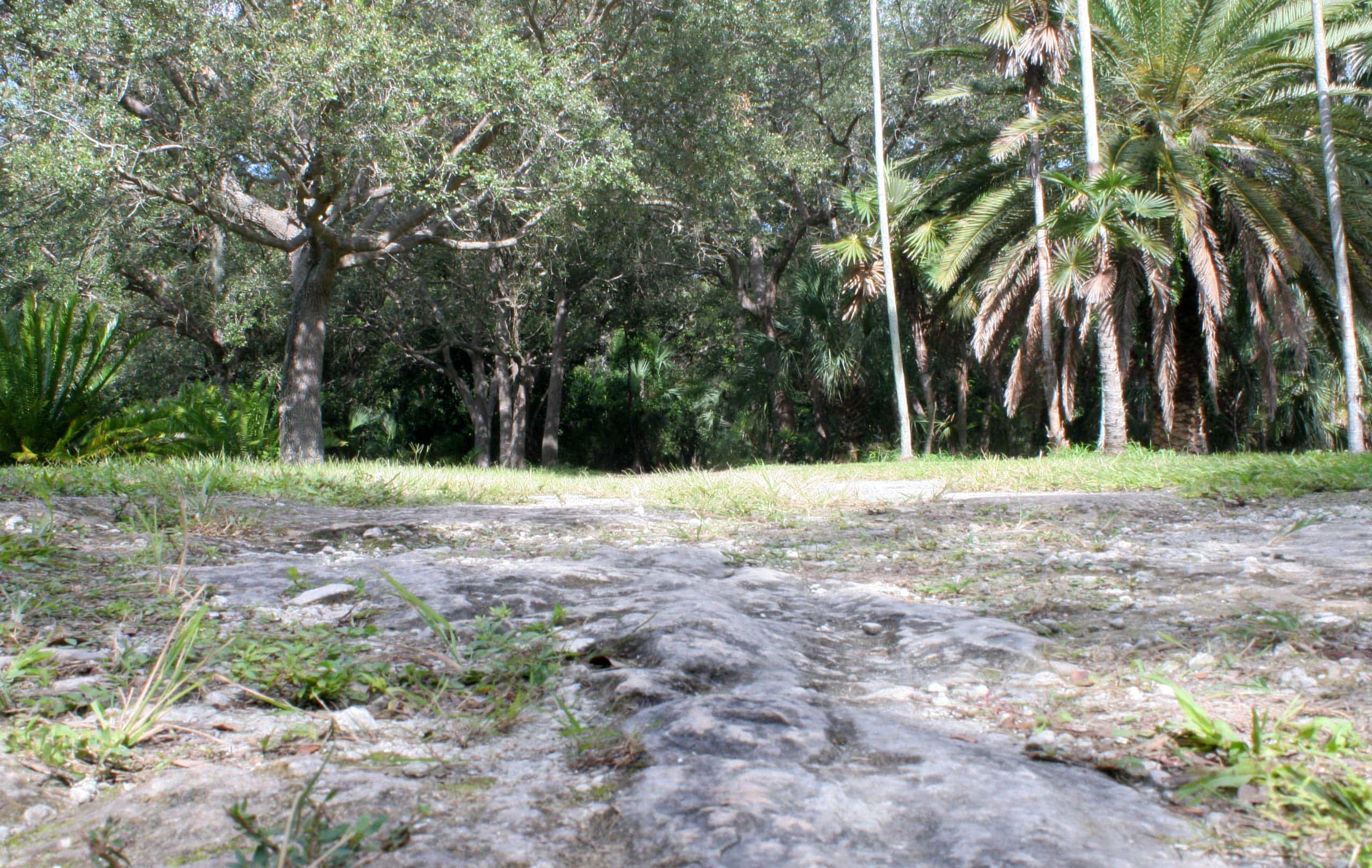
Ridge Road is currently maintained in its original and historic state.
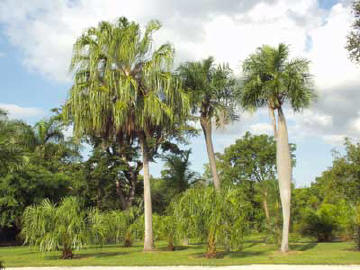
To the left is an undocumented Livistona decipiens, but growing just below are several more of the same species from Queensland, Australia, wild collected by John Dowe in 1996. On the right are Cuban belly palms, Gastrococos crispa.
This area of the Coconut Grove Palmetum contains (L to R): Attalea phalerata, Attalea butyracea, Sabal bermudana, and Brahea armata (now dead), all planted in 1932.
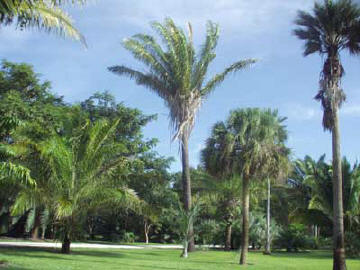
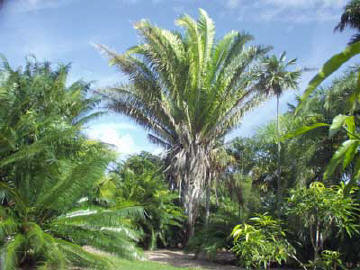
Stanley Keim, former superintendent of horticulture at Fairchild Tropical Garden, added substantially to the palm and cycad collections during the late 1950s and early 1960s. He collected this Attalea cohune from Guatemala in 1962.
Dr. Richard Moyroud rescued several of the native Keys thatch palms, Leucothrinax morrisii, seen here in 1989 from a site in the Florida Keys that was destined for road expansion.
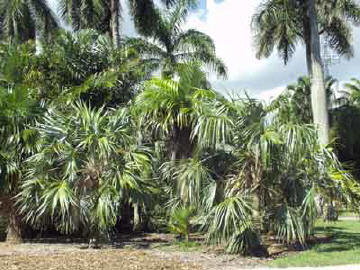
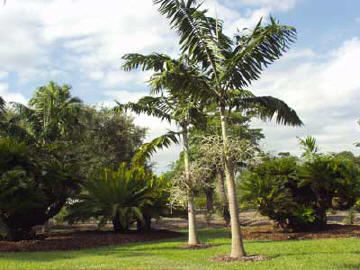
Dr. Scott Zona, Curator of the Wertheim Conservatory and Greenhouses at Florida International University, collected these Montgomery palms (Veitchia arecina) from Vanuatu in 1996.
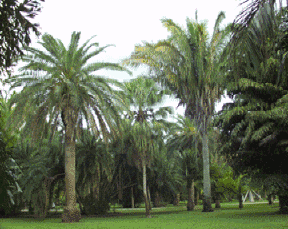

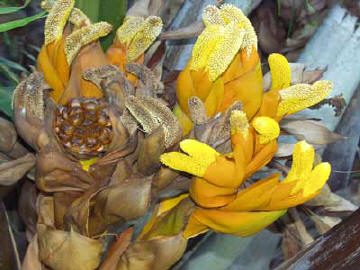
A section of the Silver Bluff Escarpment is preserved on MBC property.
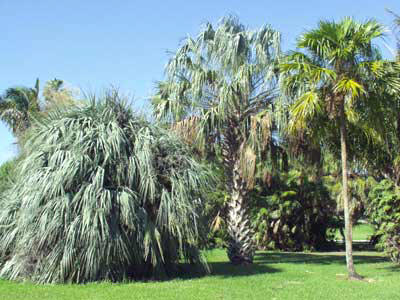
Also in the lowlands are some significant palms like these two large Copernicia baileyana (left and right) with Copernicia hospita below. In the center is Livistona decora, and just to the right of it is a thin-stemmed Livistona rotundifolia.
